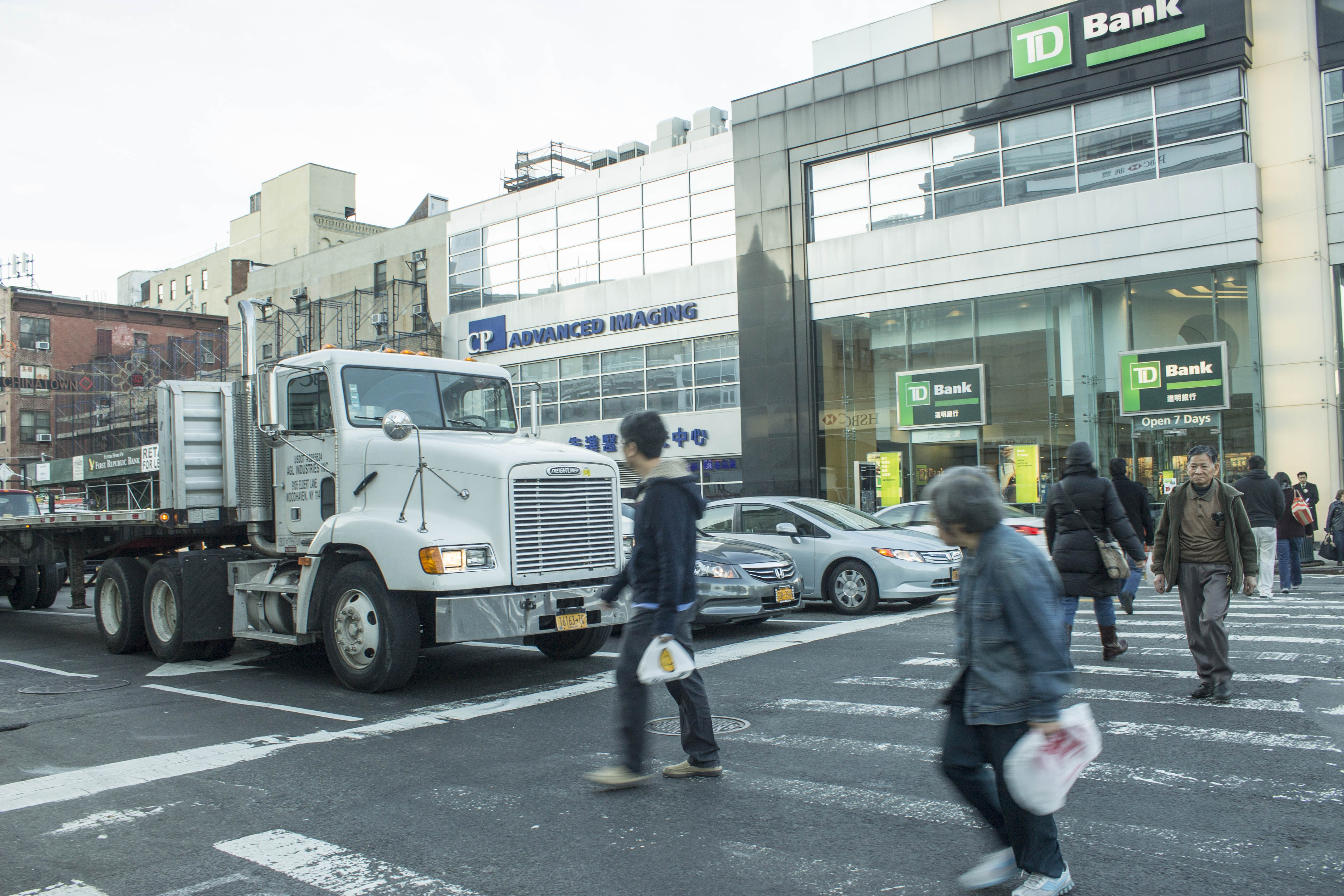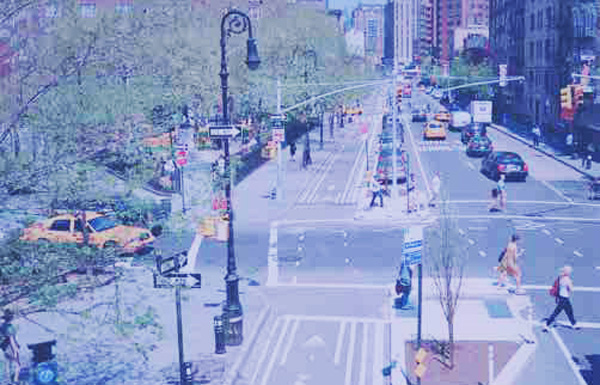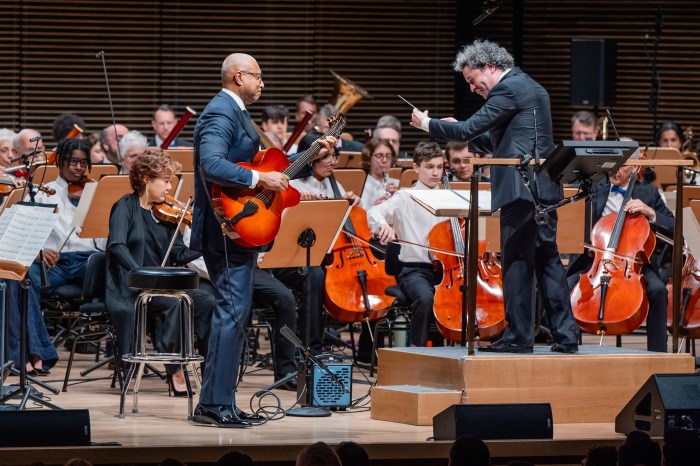
BY ZACH WILLIAMS | Motorists’ speeding and failure to yield remain top concerns under Vision Zero as the initiative to eliminate traffic fatalities in New York City enters its second year.
The city Department of Transportation emphasized improvements to street design and increased enforcement measures to counter such behavior in its 2015 Pedestrian Safety Action Plan for Manhattan, released on Feb. 17.
Fifteen intersections and 10 traffic corridors located between Canal and 14th Sts. will, by the end of 2017, likely receive traffic cameras and exclusive pedestrian crossing times under the plan for Manhattan, which also prioritized 61 intersections and seven thoroughfares located outside this area.
Houston, Canal and 14th Sts. were among the priority corridors. Troublesome intersections, such as Canal St. and the Bowery, Seventh Ave. South and Bleeker St., and Delancey and Essex Sts., were among the intersections targeted for safety upgrades.
These along with the other designated streets, intersections and a prioritized area stretching roughly from Canal St. to 59th St., accounted for two-thirds of traffic-related injuries and fatalities across the borough from 2009 to 2013, according to the report.
The New York Police Department will concentrate enforcement efforts in that broader area this year. Increased blitzes against trucks will offer greater incentives to drivers to stay on established routes and yield to pedestrians, according to the report.
Similar enforcement in 2014 spurred 126 percent and 42 percent increases citywide in failure to yield and speeding summons, respectively, according to D.O.T.
Such measures represent a proactive approach to instituting a culture of safety that eliminates the word “accident” from the equation, Vision Zero proponents say. Pedestrians account for 73 percent of traffic deaths in Manhattan compared to 58 percent citywide, according to the report.
“This plan acknowledges this injustice toward pedestrians and the synergies that can be realized by improving pedestrian safety for overall traffic safety, well-being and urban livability,” said Mayor de Blasio said in a statement accompanying the report.
Expanding the city’s network of protected bike lanes can also boost safety, according to the report, which added that city streets with such infrastructure have seen a 22 percent reduction in pedestrian injuries.
Several trends differentiate Manhattan traffic dangers, however, from those of the outer boroughs, according to the report. Trucks in this borough are involved in a quarter of traffic crashes that kill pedestrians — which is double the city average. Seniors, meanwhile, comprise just 14 percent of the borough population, yet account for 41 percent of people killed or seriously injured in crashes, a problem particularly acute in Chinatown, given its relatively high elderly population, according to the report. As The Villager reports in this week’s issue, Yu-O Pan, 63, died on Feb. 19 after she was hit by a van on Canal St. while doing Lunar New Year shopping.
Manhattan has the highest or lowest rate of traffic-related injuries relative to its population, depending on whether daytime commuters and visitors are included in the equation. The borough averaged 34 pedestrian fatalities between 2011 and 2013, according to D.O.T.
Despite the doubling of its population during the day, only 18 percent of weekday fatalities occur during the morning and afternoon rush hours, when 40 percent of Manhattan’s pedestrian travel occurs. By contrast, 48 percent of the borough’s pedestrian fatalities occur between 9 p.m. and 6 a.m., necessitating increased enforcement at those times and changes to traffic signal patterns, the report states.
“The impact of ‘safety in numbers’ may be particularly powerful in Manhattan,” the report states. “Not only is it the only borough whose population increases during work days, but Manhattan also has the highest share of peak-hour commuting (74 percent).”
But pedestrians share the blame as much as motorists for making dangerous decisions that lead to fatal traffic crashes, in contrast to other boroughs where drivers account for a greater proportion. Manhattan is the only borough where failure to yield was the top traffic concern for residents (23 percent) rather than speeding, the report notes.
City Councilmember Margaret Chin said in a statement that the report’s scope reflects the seriousness with which the de Blasio administration is approaching Vision Zero, as well as the seriousness of the traffic-related dangers within her district, which includes Chinatown. A bill she has put before the City Council aims to require that D.O.T. study how established truck routes impact pedestrian and cyclist safety.
“Among other things, the Manhattan plan accurately identifies Canal St. and some other corridors in my district as areas along which we must continue working to improve safety,” Chin said. “I have repeatedly highlighted the dangers of the chaotic and congested atmosphere on Canal St., which is one of the city’s major truck routes.”


















